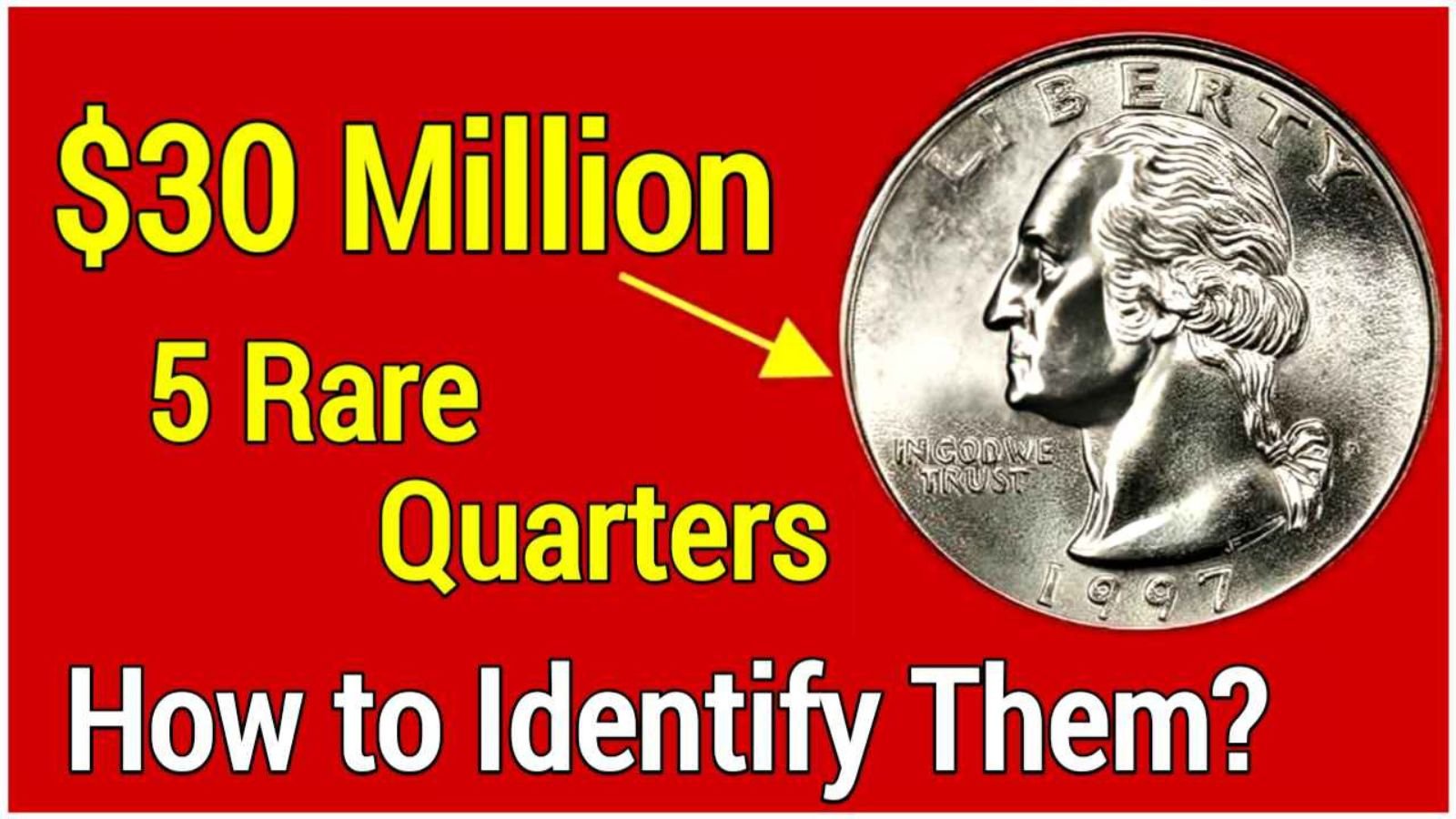Most people glance over small change without a second thought, especially when it comes to pennies and quarters. But what if that seemingly worthless coin rattling around in your pocket was actually worth thousands—or even close to a million dollars? It might sound unbelievable, but there are rare coins in circulation today, including rare quarters and a particular Lincoln Wheat Penny, that have fetched astronomical prices among collectors.
In this article, we’ll dive deep into the background of one of the most valuable coins in U.S. history—the 1943 copper Lincoln Wheat Penny—and why some rare quarters are also making waves in the numismatic world.
The History of the Lincoln Wheat Penny
The Lincoln Wheat Penny first made its appearance in 1909 to commemorate the 100th anniversary of President Abraham Lincoln’s birth. It was a revolutionary coin in many ways, being the first U.S. currency to feature a real person instead of an abstract figure like Lady Liberty. The obverse (front) of the coin features Lincoln’s portrait, while the reverse has two stalks of wheat—hence the name “Wheat Penny.”
The coin was minted continuously until 1958, when it was replaced by the Lincoln Memorial design. However, some of the older Wheat Pennies, especially those made with unique materials or printing mistakes, are now considered some of the most rare quarters and pennies in existence.
Why Some Coins Are Worth a Fortune
Most coins are mass-produced and hold only face value, but a few can become highly valuable due to:
- Low Mintage: A limited number of coins were produced that year.
- Minting Errors: Mistakes like double stamping or using the wrong metal.
- Historical Relevance: Coins made during notable times in history (like World War II) often become collectible.
One of the most astonishing examples is the 1943 Lincoln Wheat Penny, which was mistakenly minted in copper instead of steel. During World War II, copper was a crucial resource needed for the war effort. To conserve it, the U.S. Mint switched to using zinc-coated steel for pennies that year.
However, a small number of copper blanks (called planchets) from 1942 were accidentally used in the production of 1943 pennies. The result? One of the rarest and most valuable coins in the world.
How Much Is a 1943 Copper Wheat Penny Worth?
Depending on the condition, these coins have sold for eye-watering amounts. In top condition, the 1943 copper Wheat Penny can be worth up to $880,000. Yes, that’s right—a single coin valued at nearly a million dollars. Some collectors have paid more than that at auctions because the coin is not just rare—it’s iconic.
To put that into perspective, many collectors would trade dozens of rare quarters to get their hands on one of these pennies.
Overview Table – What You Should Know
| Coin Type | Lincoln Wheat Penny |
|---|---|
| Year Introduced | 1909 |
| Highly Valuable Year | 1943 (Copper Error) |
| Regular Material (1943) | Zinc-coated Steel |
| Rare Material (1943) | Copper |
| Estimated Top Value | $880,000 |
| Could It Still Circulate? | Yes, but extremely rare |
| Notable Feature | Wheat stalks on reverse side |
Rare Quarters Also Making Headlines
While pennies are catching headlines for high values, rare quarters are no slouch either. In fact, quarters like the 1932-D Washington Quarter and the 2004 Wisconsin Extra Leaf Quarter have also fetched significant sums. Just like the 1943 copper penny, these rare quarters gain value due to minting errors, limited production, or unique historical elements.
Could These Coins Still Be in Circulation?
You may think it’s impossible, but yes—both rare quarters and the 1943 copper Lincoln Wheat Penny might still be out there in someone’s pocket change. Most people don’t know what to look for, which is why these coins can go unnoticed. It’s very possible that someone received a rare coin as change and never knew it.
Old family coin jars, forgotten piggy banks, or inherited coin collections are all places where such treasures may be hiding. There have been several real-life cases where lucky individuals discovered valuable coins this way.
How to Identify a 1943 Copper Wheat Penny
If you want to try your luck at finding one of these valuable coins, here’s what you should look for:
- Check the Year: You’re specifically looking for a 1943 penny.
- Check the Color: Regular 1943 pennies are silver-colored due to their steel core. A copper one will have a brown or reddish tone.
- Use a Magnet: Steel pennies will stick to a magnet. Copper ones won’t.
- Inspect the Condition: Even if it’s worn, don’t toss it aside. Every genuine piece is valuable.
- Do NOT Clean the Coin: Cleaning can damage its surface and drastically reduce its value.
- Seek Expert Help: Take the coin to a certified coin dealer or numismatist.
How to Identify Rare Quarters
In addition to pennies, it’s smart to keep an eye out for rare quarters. Here are some famous ones to note:
- 1932-D Washington Quarter: Valuable due to low mintage numbers.
- 1950-D/S Overmint Quarter: Look for a “D” stamped over an “S.”
- 2004 Wisconsin Extra Leaf Quarter: Has an extra corn leaf on the design, worth up to $15,000.
- 1965 Silver Quarter Error: Some 1965 quarters were mistakenly made with silver instead of copper-nickel.
Just like with the Wheat Penny, you’ll want to look at the date, mint mark, and any signs of errors. A magnifying glass, scale, and good lighting are must-have tools.
Where to Sell Rare Coins
If you think you’ve found a valuable coin—whether a penny or any of the rare quarters—don’t rush to sell it. First, get it appraised by an expert.
Here’s how you can go about it:
- Local Coin Dealers: Many offer free evaluations.
- Online Forums: Sites like CoinTalk or Reddit’s r/coins allow you to post pictures and get feedback.
- Coin Shows or Auctions: Good for networking and finding buyers.
- Grading Services: Professional grading by PCGS or NGC boosts credibility and resale value.
Frequently Asked Questions About Rare Coins
Q1: Can rare coins really be found in change?
Yes, several people have found rare pennies and rare quarters in everyday pocket change.
Q2: Are all 1943 pennies valuable?
No. Most are made of steel and worth only a few cents. Only the rare copper versions hold significant value.
Q3: How do I know if my quarter is rare?
Check the date, mint mark, and for any visible errors or anomalies.
Q4: Is it worth getting coins graded?
Yes. A professional grade can significantly increase its resale price.
Q5: Should I clean my old coins?
Absolutely not. Cleaning can ruin the surface and devalue the coin.
Final Thoughts: A Small Coin with a Big Story
It’s incredible to think that a single penny—or one of the many rare quarters—could be worth as much as a house, or more. With coin collecting gaining popularity, now is a great time to take a closer look at your spare change.
That penny sitting in your wallet could be the legendary 1943 copper Wheat Penny. And those quarters? They might include some of the rarest finds in U.S. history. Whether you’re a seasoned collector or a curious beginner, it’s always worth a second glance.
Rare Quarters and valuable pennies have more than monetary worth—they tell stories, preserve history, and offer a thrill that few other hobbies can match. So, next time you hear coins jingle in your pocket, don’t ignore them. One of them might just be your lucky treasure.
Some Important Link
| Telegram Group | Click Here |
| WhatsApp Group | Click Here |
| Home Page | Click Here |











